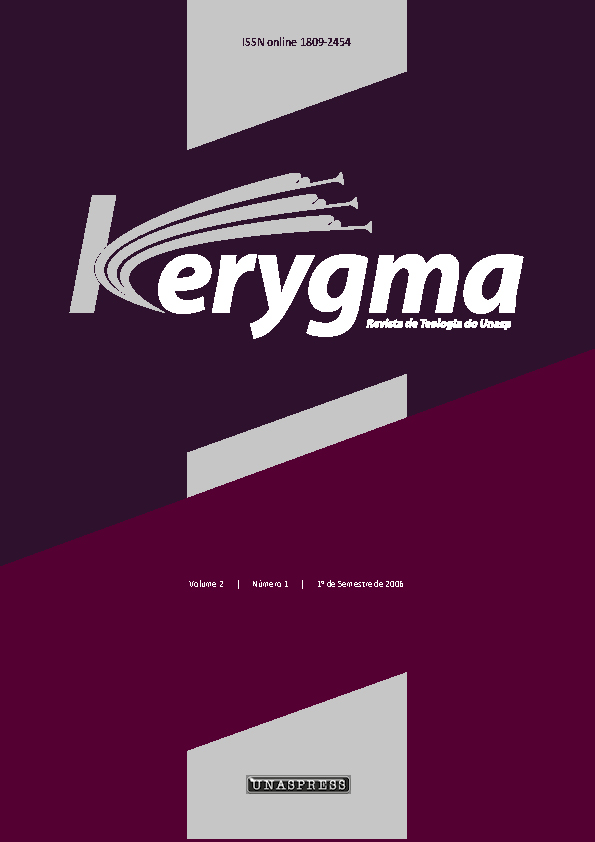Abstract
The purpose of this study is to describe and analyze comparatively the crises of the Apostolic Church and of the Seventh-day Adventist Church with special emphasis in its missiological implications. Aspects of the Millerite crisis were also addressed, because of its direct connection with the beginnings of Seventh-day Adventism. Related to this purpose, there is an evaluation on how these two movements' atitudes towards their respective crises affected the fulfillment of the evangelical mission. As a result of the crises the Apostolic Church and the Seventh-day Adventist Church experienced throughout their history, fragmentation became a constant threat to their unity of thinking, feeling, and action. Such crises emerged from an erroneous theological perspective, and it became an imperative necessity to overcome them through the acceptance, at a proper time, of accurate theological concepts. In this way, the unity was strengthened and the Church itself was led to an effective fulfillment of its mission. However, when crises were not addressed at the right time, its solutions helped the Church to recover its missiological objective, but did not avoid the missionary losses caused by the delay. When a controversy is overcome without correcting the erroneous concept upon which it is based, such an overcoming obliterates the understanding of truth and, unfortunately, establishes heterodoxy as truth. When an overcoming happens through the misuse of authority, then tension between the antagonistic parts tends to increase, resulting in a growing-fragmentation tendency, and the loss is almost irreparable for the fulfillment of mission.Authors who publish on Kerygma must agree to the following terms:
- Once accepted for publication, the copyright of articles is automatically transferred to Kerygma.
- All material used in the text that is copyrighted by third parties must be duly referenced.
- Authors must also retain the reproduction rights of images and tables in their material, if necessary.
- The authors guarantee that the submitted text is entirely their authorship and has not been submitted and/or published elsewhere.
- The opinions, ideas and concepts expressed in the texts are the sole responsibility of their authors and do not necessarily represent the opinion of Kerygma;
- The editors reserve the right to make textual adjustments and adapt to the publication's norms.
- Authors retain copyright and grant the journal the right of first publication, with the work simultaneously licensed under Creative Commons Attribution-NonCommercial 4.0 International, which allows sharing of the work with acknowledgment of authorship and initial publication in this journal. This license allows others to remix, adapt, and build upon your work non-commercially, as long as they give proper credit to you and their new works are not used for commercial purposes. However, users are not required to license those derivative works under the same terms.
- The authors agree with the free reproduction of their material by Kerygma, which may adapt, modify, condense, summarize, reduce, compile, expand, alter, mix with other content, include images, graphics, digital objects, infographics and hyperlinks, illustrate, diagram, divide, update, translate and carry out any other transformations, requiring the participation or express authorization of the authors.
- The authors agree that Kerygma can distribute the articles through cable, fiber optics, satellite, airwaves or any other system that allows access to the user at a specific time and place, either by free channels or by systems that import payment. Kerygma may also include work in a physical or virtual database, archiving in printed format, storing on a computer, in a cloud system, microfilming and other current forms of archiving or that may still be developed, with or without profit.
- Authors are permitted to enter into separate, additional agreements for the non-exclusive distribution of the published version of the work in this journal (e.g., publishing it in an institutional repository or as a book chapter), with acknowledgment in the new publication of its initial publication in this journal.
- Kerygma owns the rights to all works published by it. The full reproduction of these texts in other publications, for any other purpose, by any means, requires written authorization from the publisher. The same goes for partial reproductions, such as summary, abstract, portions with more than 500 words of the text, tables, figures, illustrations, etc.
- Authors are granted permission and encouraged to publish and distribute their work online (e.g., in institutional repositories or on their personal websites) at any point before or during the editorial process. This is because it can lead to productive alterations and increase the impact and citation of the published work. (See "The effect of open access and downloads ('hits') on citation impact: a bibliography of studies.")
Downloads
Download data is not yet available.

